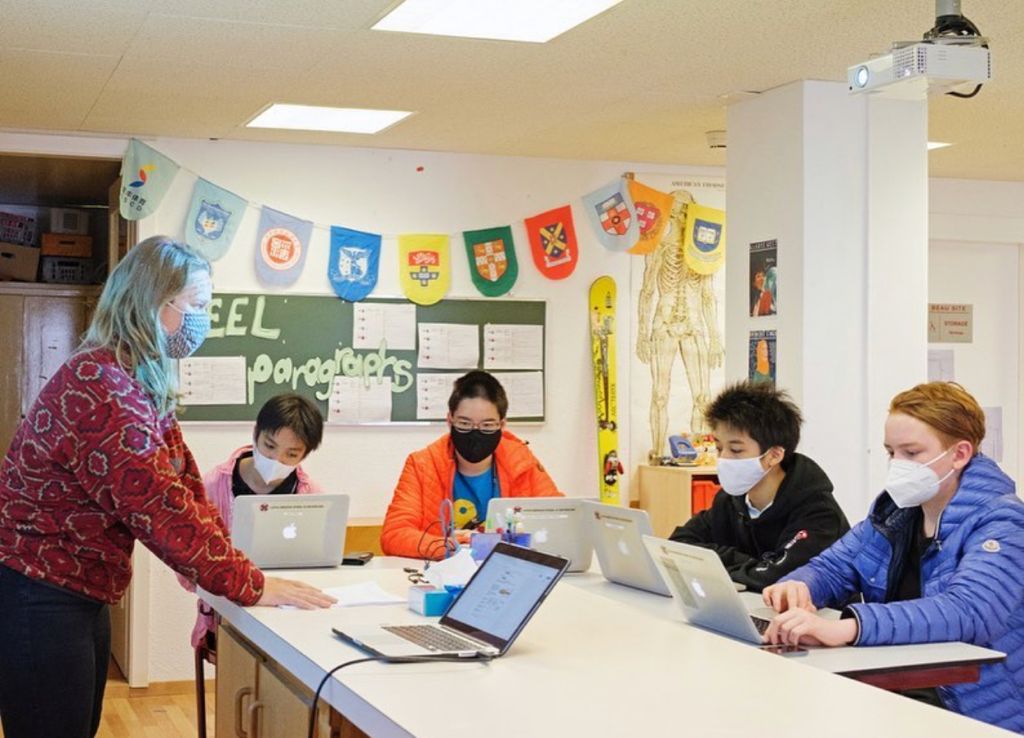Topic: Study in Switzerland
Back to school: What can students in Switzerland expect?
As students are slowly returning to their schools and campuses for a fresh academic year, schools are navigating the new normal with the experience gained from the past year of the pandemic.
Children and young adults at any school become a part of an extended family, but even more so when there’s at least a portion of the student body who are boarders (living on school campus). While this is the first and hopefully last pandemic schools will need to navigate, it’s good to remember that they’ve been dealing with children and germs for far longer! Whether it’s a flu outbreak or chickenpox, highly contagious and unpleasant childhood illnesses are something they’ve always had to manage.
Schools in Switzerland are using the government guidelines for the general population as their guide. These are updated on a regular basis and are available in all three official languages of Switzerland and English. Many schools are going above and beyond official guidelines, and we reached out to two schools in Switzerland to see how they’re handling this next phase:

Prevention: Depending on their departure country, students will be PCR tested upon their arrival (as well as performing the routine PCR test before take off). Additionally, the school may test students upon arrival at campus. Once they’ve received the all clear, students can fully integrate school life.
We spoke with Les Roches Switzerland, who shared that among their many prevention and detection methods they ensure best practices during daily activities. All students are checked by a thermal camera upon entering the main building, with mandatory mask wearing and sanitation stations available across campus. During class time, social distancing is applied, with extra space between desks and seats. And when it’s time to change classrooms, students remain and the teachers move to reduce movement around the building.
At Leysin American School, a Swiss boarding school, they consider themselves as one big family with 60 nationalities living full-time on school grounds so the school has rolled out a “bubble” process. Their Managing Director Christophe Ott explains that when cases are low, the student bubble includes the town of Leysin, and the bubble can expand and shrink (right down to students dormitories) as needed. He has found that students often benefit more from being on campus, as even with restrictions in place, they can maintain a far more sociable experience.

Containment: At the first sign of symptoms, students are moved into separate accommodation and antigen tests (rapid diagnostic tests) are administered. In the event of a positive case, confirmed by a PCR test, the student will be moved out of their dormitory/room into separate accommodation. For example, Leysin American School moves students into a care centre to ensure the student’s well-being while isolated. In a similar fashion, Les Roches has a dedicated building with food delivery and daily checks from their health & well-being team. While it’s important to reduce the spread of the virus, schools are equally concerned about ensuring good mental health among students. While they may need to be physically isolated, the students are not alone and will be cared for throughout their quarantine. If they’re well enough, class attendance can be maintained virtually until they receive the all-clear to return to class.
Of course, each school will have their own set of procedures and policies, and all are keen to communicate and reassure parents and students alike. Rest assured that after 18 months of adaptation, schools are extremely well prepared for the next academic year.
And while some countries have decided to close their borders to international students, we’re happy to say that Switzerland will keep welcoming students. At Swiss Premium Education, we are confident that our partners are putting all of the necessary measures in place to guarantee the safety of their students.
Please note, all information is correct at the time of publication.

